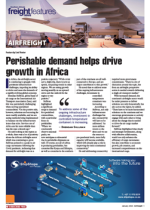Hopes are high that the traditional peak season will return in 2024, which is good news for the airfreight market, which has been under pressure for some time.While the global supply chain chaos caused by the pandemic created many opportunities for the air cargo industry, the drop in consumer spending around the world resulted in sharp decreases in air cargo demand in 2022, which continued in 2023.According to Wenwen Zhang, airfreight analyst at Xeneta, the past four years have been a rollercoaster ride. “No matter whether it is supply or demand, there has been high volatility. The imbalance in the market is now mostly corrected and starting from 2024 we will have more chance of a classic seasonality.”Zhang said this was especially important for Asia to Europe and North America, with a return of capacity along with a pick-up in demand during the fourth quarter of the year. “The return of classic seasonality means shippers have more confidence in where the peaks and troughs in rates will fall.”She maintained that while there may be a recalibration at global levels, shippers should remain wary of the airfreight market’s sensitivity to factors which cause sudden shocks to the sector.In its annual airfreight outlook, Xeneta forecasts that 2024 could be a fresh start for the air cargo industry.“What happens in the ocean freight market usually impacts what happens in the air cargo market,” reads the latest report. “Air cargo rates drop as ocean schedule reliability improves.”Zhang said it was important to note that markets were constantly evolving and while an improved 2024 was expected for the air cargo market at large, disturbance could still emerge at regional level.She said now more than ever shippers needed to remain agile and monitor what was going on – and not only in their own supply chains and markets, but also have developments and data in the ocean market and on all trades, because it could have a huge impact on airfreight rates.“As we have seen over the past few years, air transportation is highly sensitive to market disruptions involving other modes of transport. Any disturbance in the surface mode – whether it is ocean, rail or trucking – can have significant implications for airfreight cargo.”

